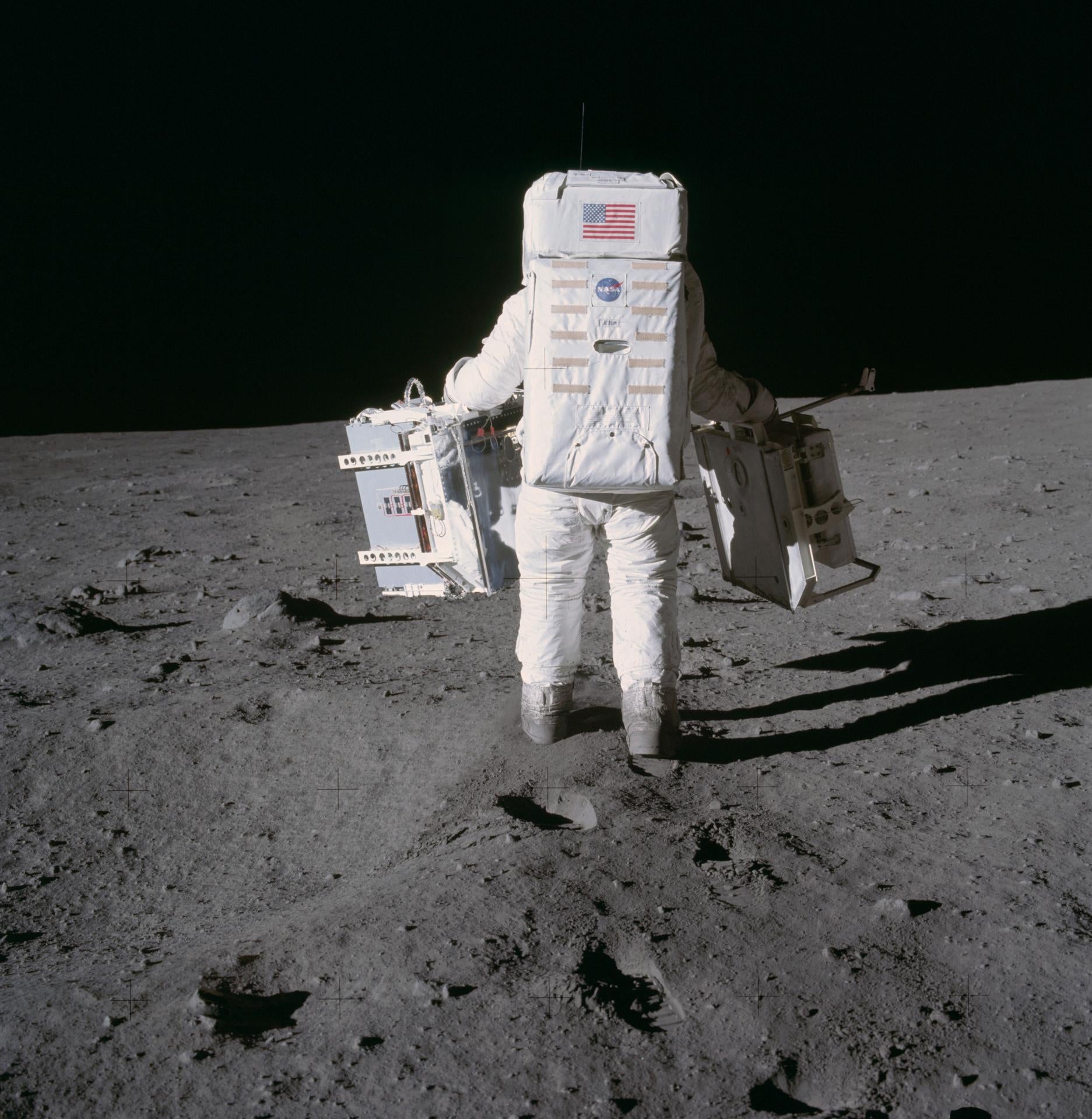Deprogramming Apollo
Dear readers,

Dear readers,
It’s the seventh edition of Space Business, Quartz’s newsletter on the economic possibilities of the extra-terrestrial sphere. Please forward widely, and let me know what you think. This week: The cult of Apollo, Dragon hiccups and making it in space.
🌘 🌘 🌘
It’s Apollo 11’s 50th anniversary week and there’s nothing left to say.
The original Apollo program itself, like any mega-project that involves incomprehensible amounts of money and tens of thousands of people, doesn’t reduce easily and can’t be accounted for on a balance sheet. It certainly cannot be divorced from the urgency of the Cold War drive to beat the Soviet Union and deliver the best possible propaganda for the United States. Apollo became a holy crusade, or maybe a metaphorical monument built to mourn the slain John F. Kennedy.
Talking to some advocates of a lunar return, it seems like the goal of the space program this time is to inspire more people to be in the space program, so that they can inspire another generation, ad infinitum. But will that be enough for NASA chief Jim Bridenstine to lead a return to the moon in 2024?
In landing the first woman on the lunar surface, he explained this week, NASA would do something that people will be celebrating 50 years from now, just like the Apollo 11 landing we will all fondly recall on July 19.
I hoped for a better answer from the first NASA administrator who wasn’t alive for the first moon landing. He did touch on recent discoveries about water on the moon and its economic importance, but then he mused about the potential of going to Mars in 2033 to find a source of inspiration. “It’s finding life on another world…life could exist on Mars,” Bridenstine suggested as a possible generational stunner.
Too often it feels like the cult of Apollo has become a cargo cult, akin to the Pacific islanders who built replica airstrips in an effort to lure back the modern goods brought by soldiers during World War II. This did not succeed, and neither will building an enormous rocket to go to the moon reconjure Cold War urgency.
Apollo, to use a favored NASA buzzword, was not sustainable. Part of Apollo’s legacy is how it makes contemporary human spaceflight harder. The agency’s human space exploration programs too often try to replicate the original, most obviously when a George W. Bush era moon program was called “Apollo on steroids.” But the political will doesn’t exist for such big government moonshots.
Sustainability will be found in making space more like the rest of our economy, with private businesses taking up the load. NASA is coming around to that idea—Bridenstine said this week that some companies have offered to pick up a third of the cost of building a new moon lander. (I’d guess Blue Origin.) Still, the bulk of the Artemis program will still be Apollo-lite.
NASA’s goal is doing something the world will remember 50 years on. But a better question might be, what can NASA do that people will need in 50 years?
🌘 🌘 🌘
Imagery Interlude: Buzz Aldrin carries a pair of scientific instruments for placement on the surface of the moon during the Apollo 11 mission, including a laser reflector that can still be used today. NASA would dearly like to follow in his footsteps.

🌘 🌘 🌘
SPACE DEBRIS
SpaceX fixes a leak. Elon Musk’s team explained what happened when their Crew Dragon spacecraft exploded during an April ground test. Propellant leaking into a pressurization system was identified as the culprit, and the company thinks it can fix the problem fairly easily. But the setback means SpaceX is unlikely to fly the spacecraft in 2019, a disappointment for a team that seemed so close after a March dress rehearsal.
Paid in Space. Made in Space, the orbital fabrication company that has been printing advanced fiber optic cables on the International Space Station, received a new $73 million contract with NASA. The company will use the money to print 10-meter-long metal beams on a special manufacturing satellite, Archinaut 1, that it expects to launch in 2022. Engineers believe that if structural components can be made in orbit rather than flown up from the Earth, ambitious space activities of all kinds will become more feasible.
OneWeb plugs in. The company, which aims to operate a 650-satellite constellation delivering broadband internet in 2021, said its first six satellites were operational and streaming HD video at 400 mbps. I enjoyed this promo video mainly because it feels like the engineers made it themselves.
Galileo (Galileo). The European equivalent of GPS has been down for days thanks to technical glitches. While the network is still in its testing phase before it goes to full operational deployment, the failure doesn’t give credence to boasts about the reliability and improved accuracy of the system. A reminder that systems of enormous complexity underly even the simplest things we do, like look at maps on our phones.
SCRUB WATCH: Speaking of moon missions, India’s lunar lander Chandrayaan-2 has been delayed and may launch on July 22. Meanwhile, the Boeing-Lockheed Martin joint venture delayed the launch of an advanced communications satellite for the US Air Force twice, first to change a battery and now due to suspected problems with an unidentified component. And then ULA announced that it would also delay plans to launch a GPS satellite because of problems with the same part, which engineers are still trying to solve.
your pal,
Tim
Hope your week is out of this world. Please send lunar inspiration, ten meter metal beams, tips and informed opinions to [email protected].